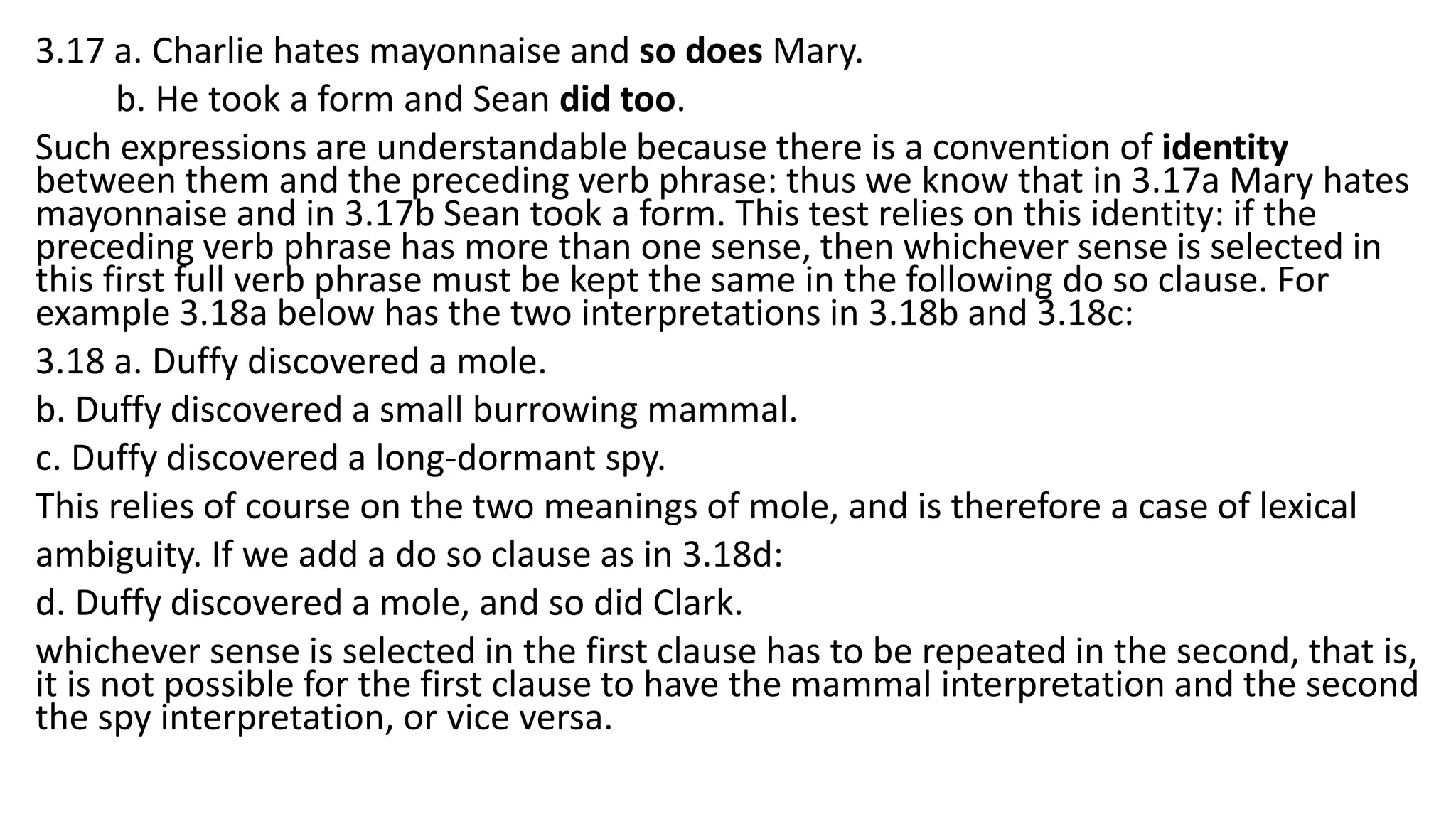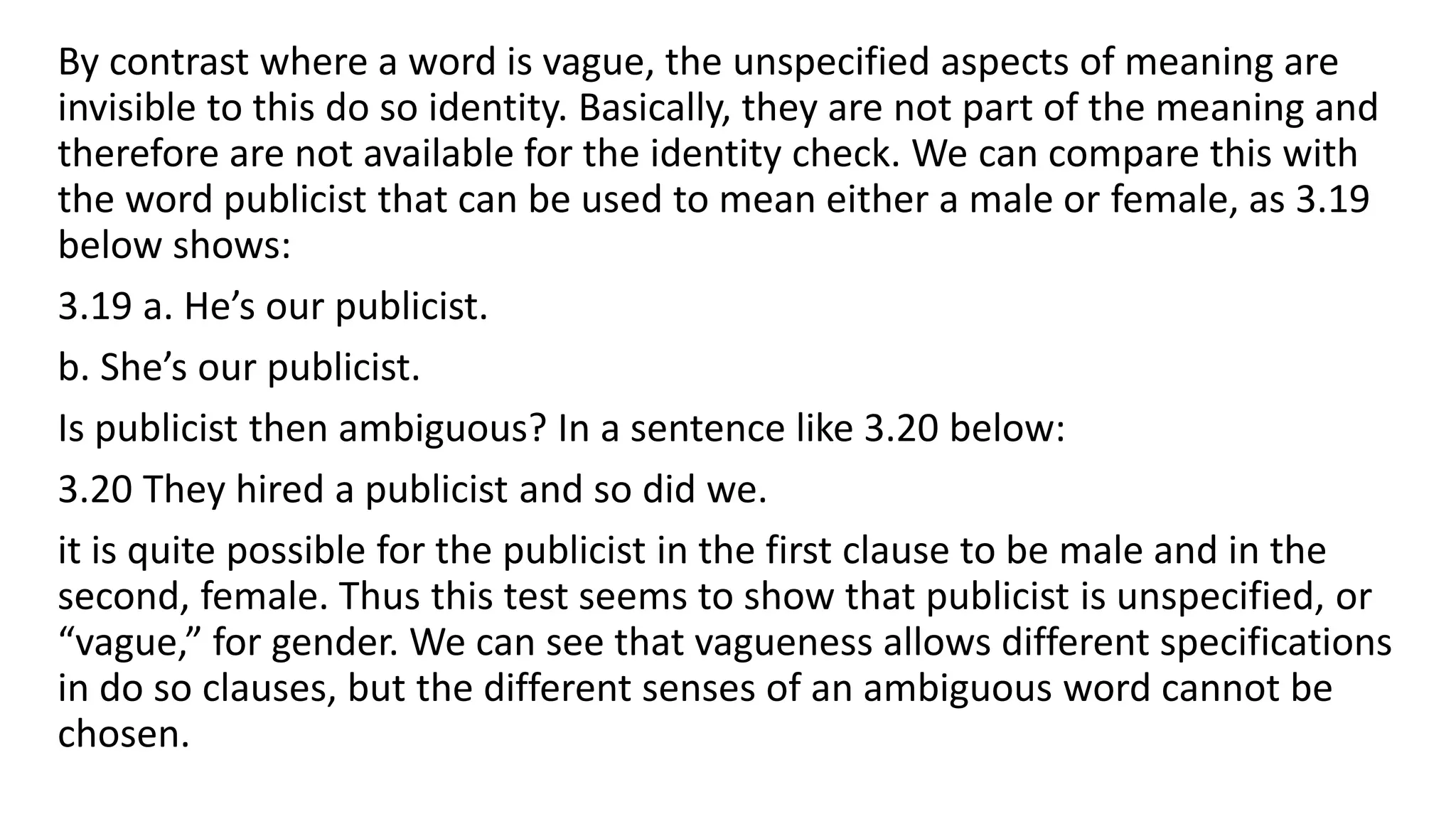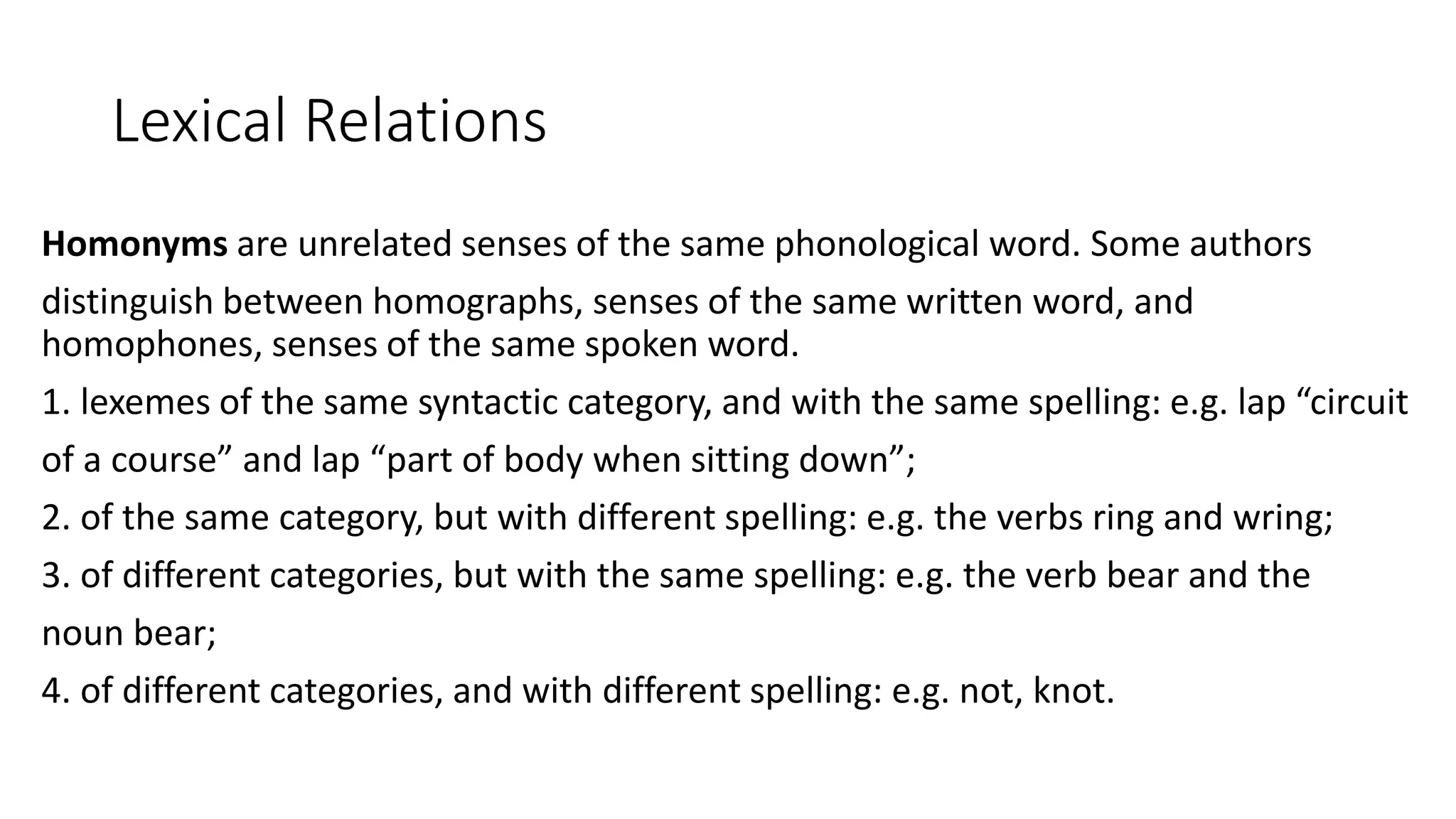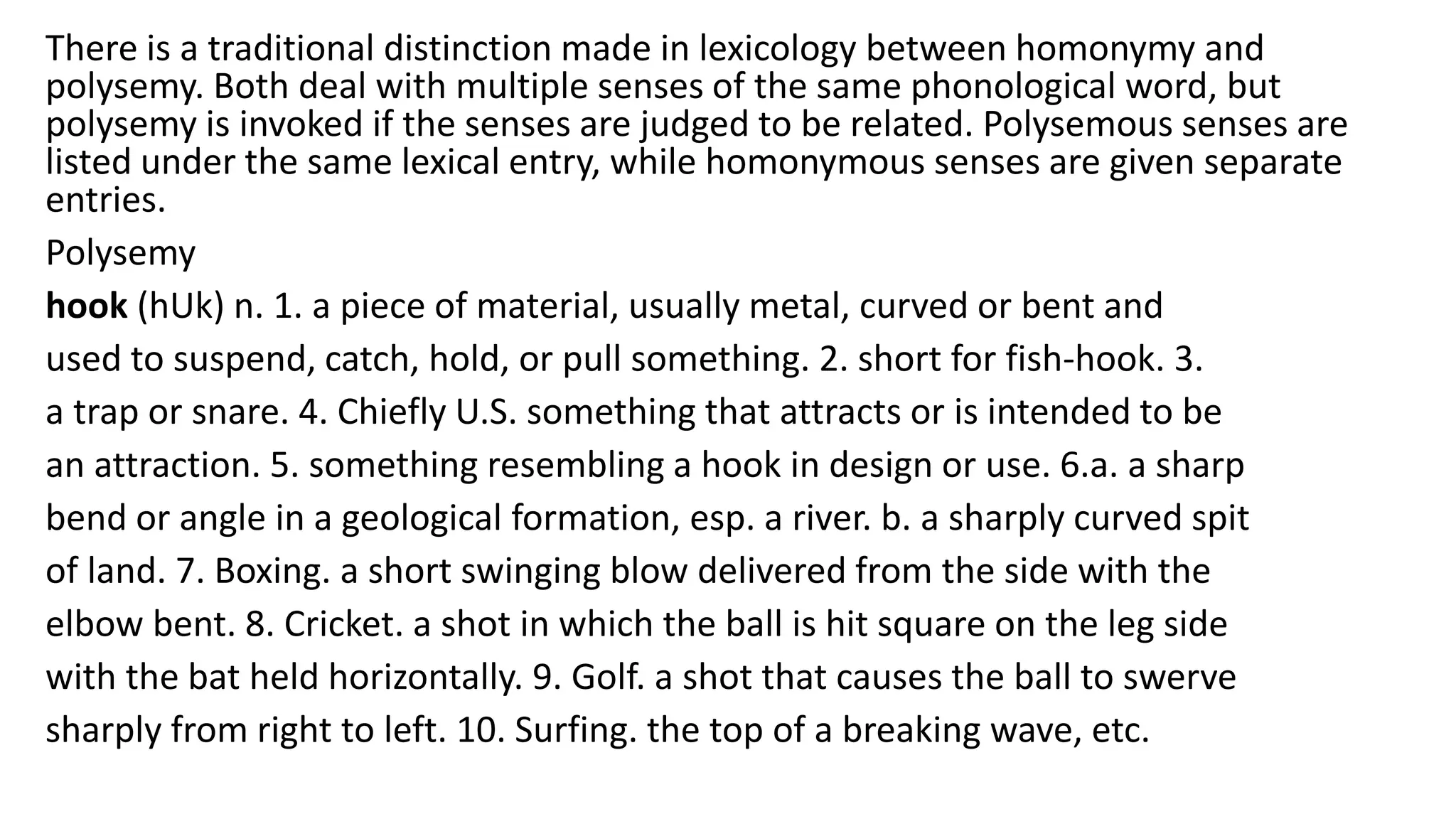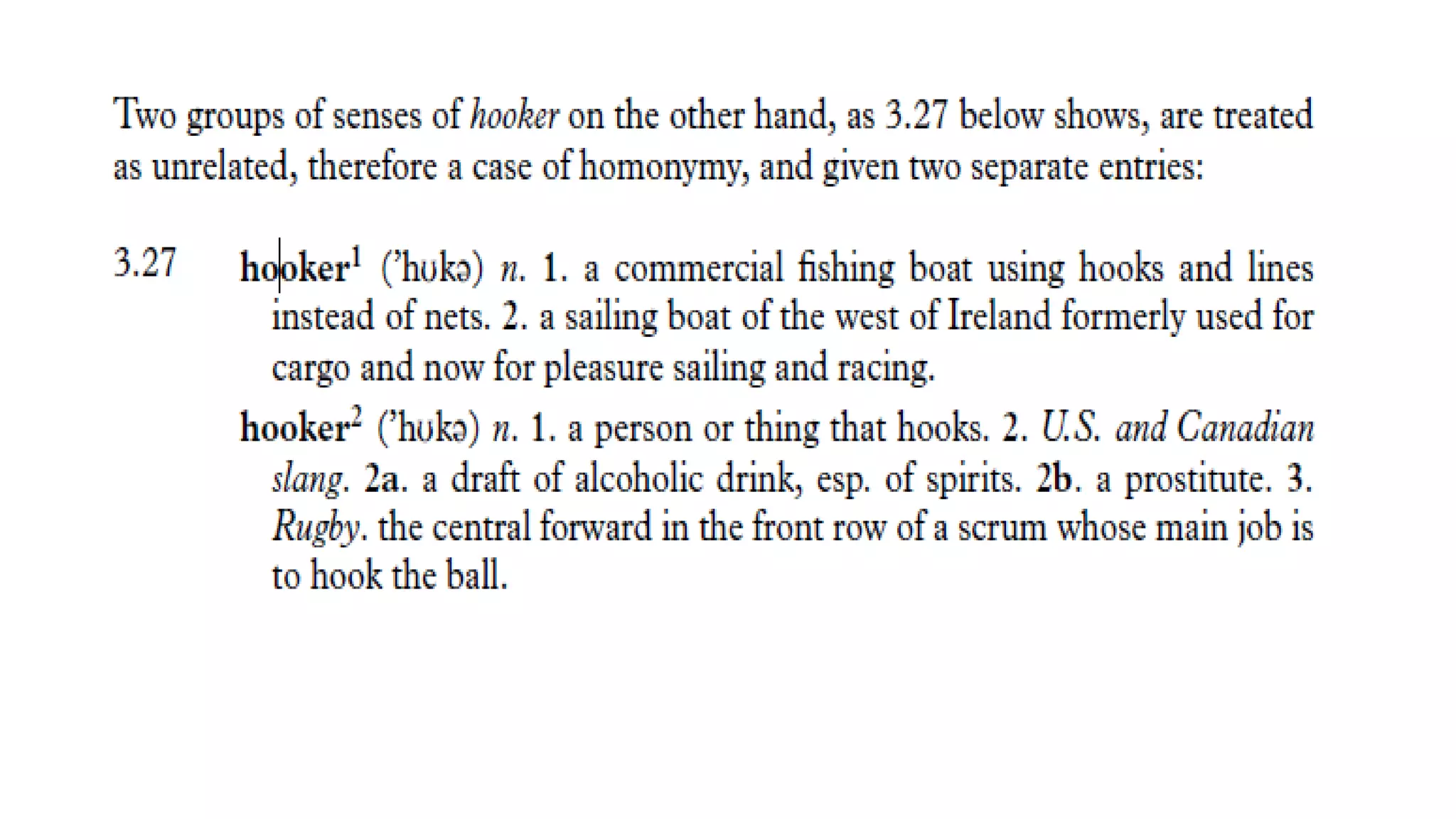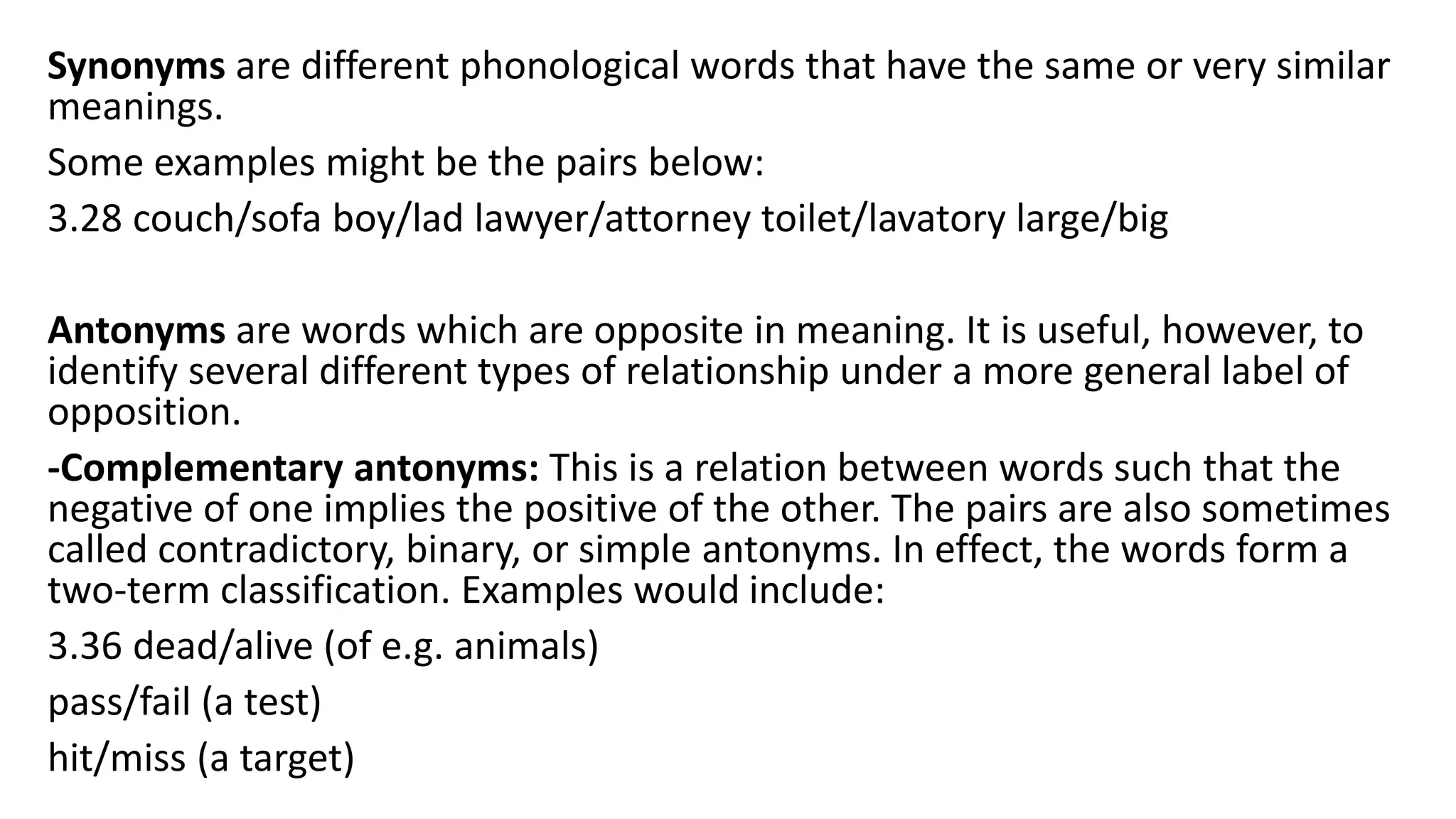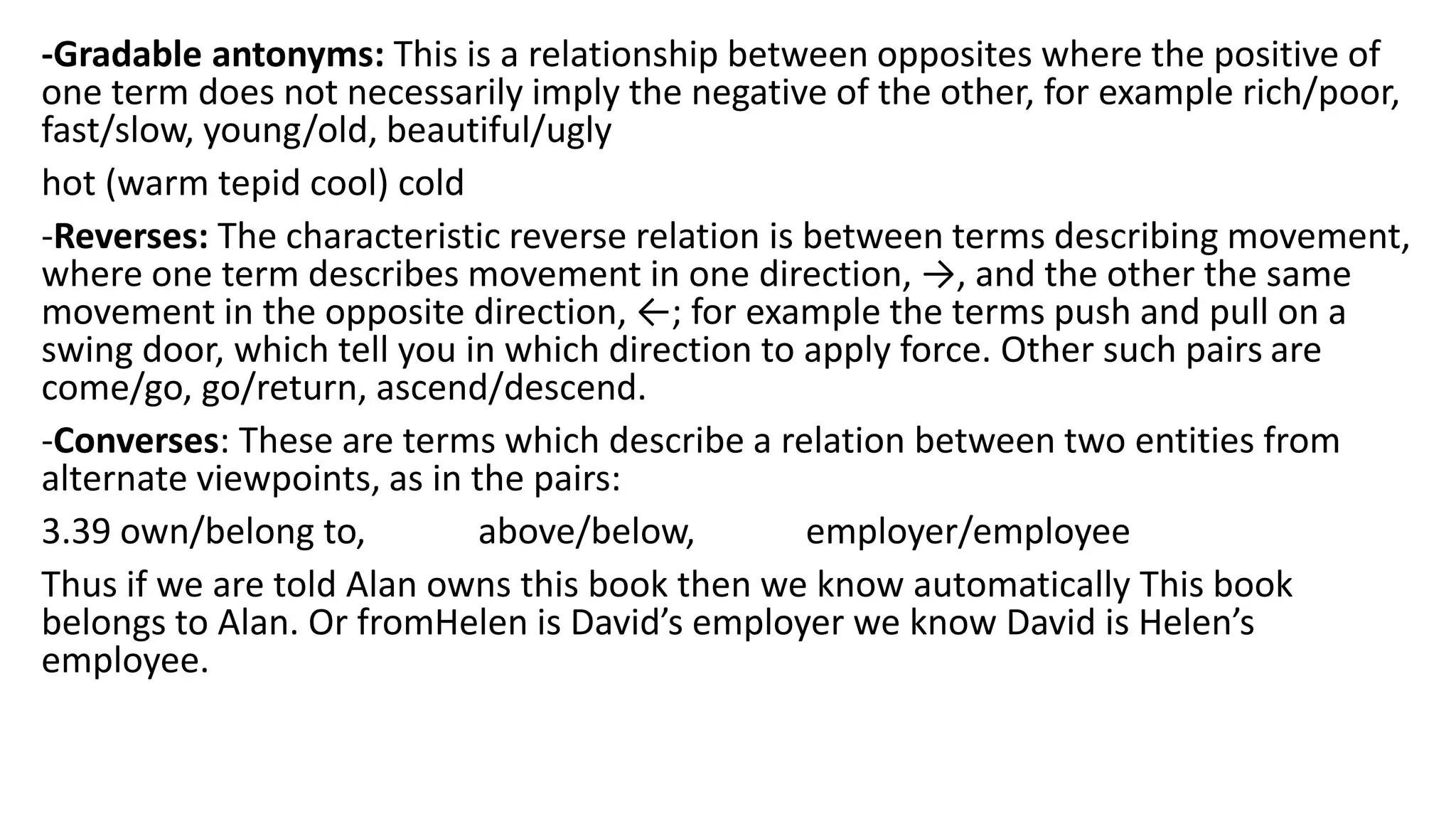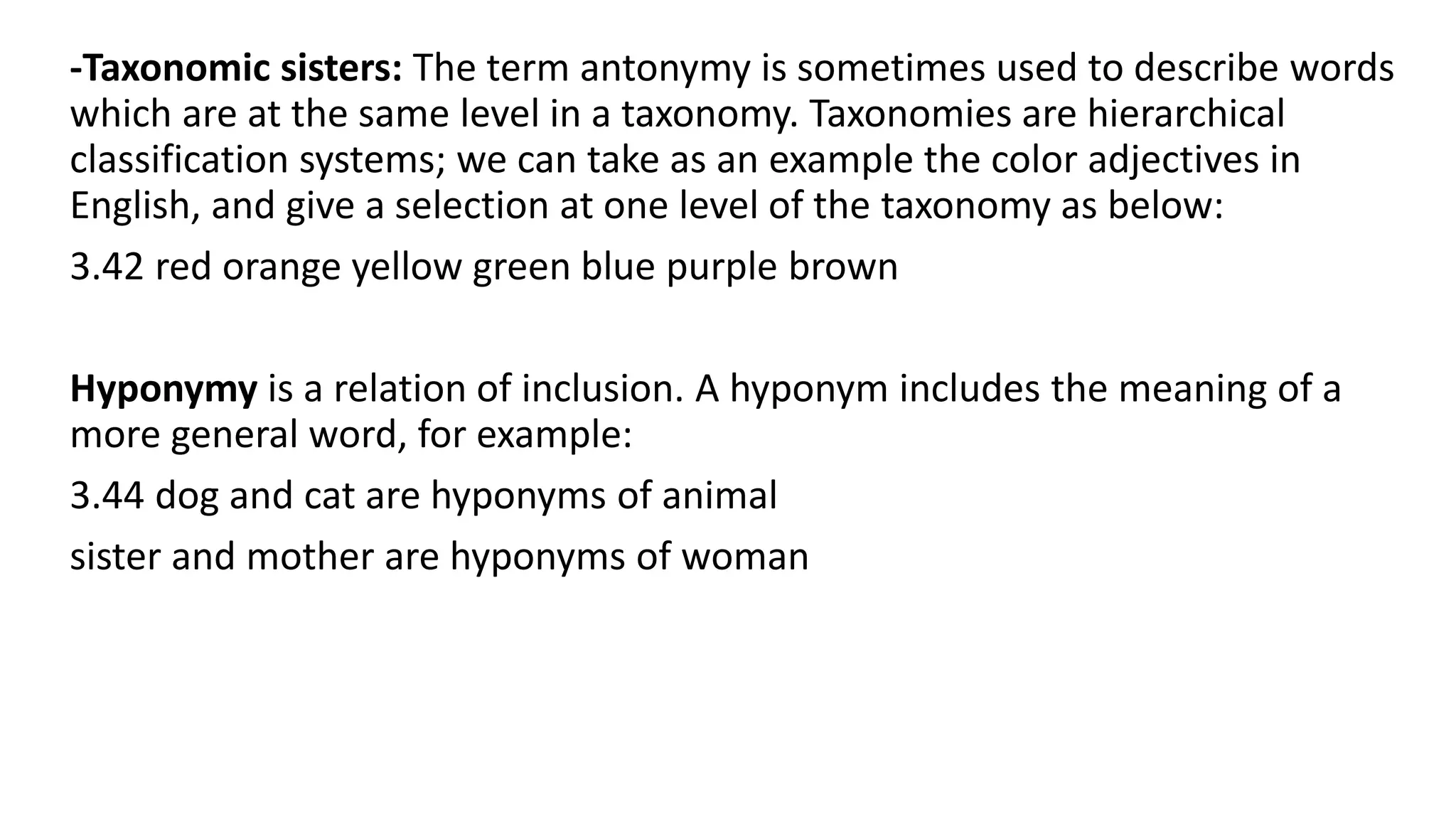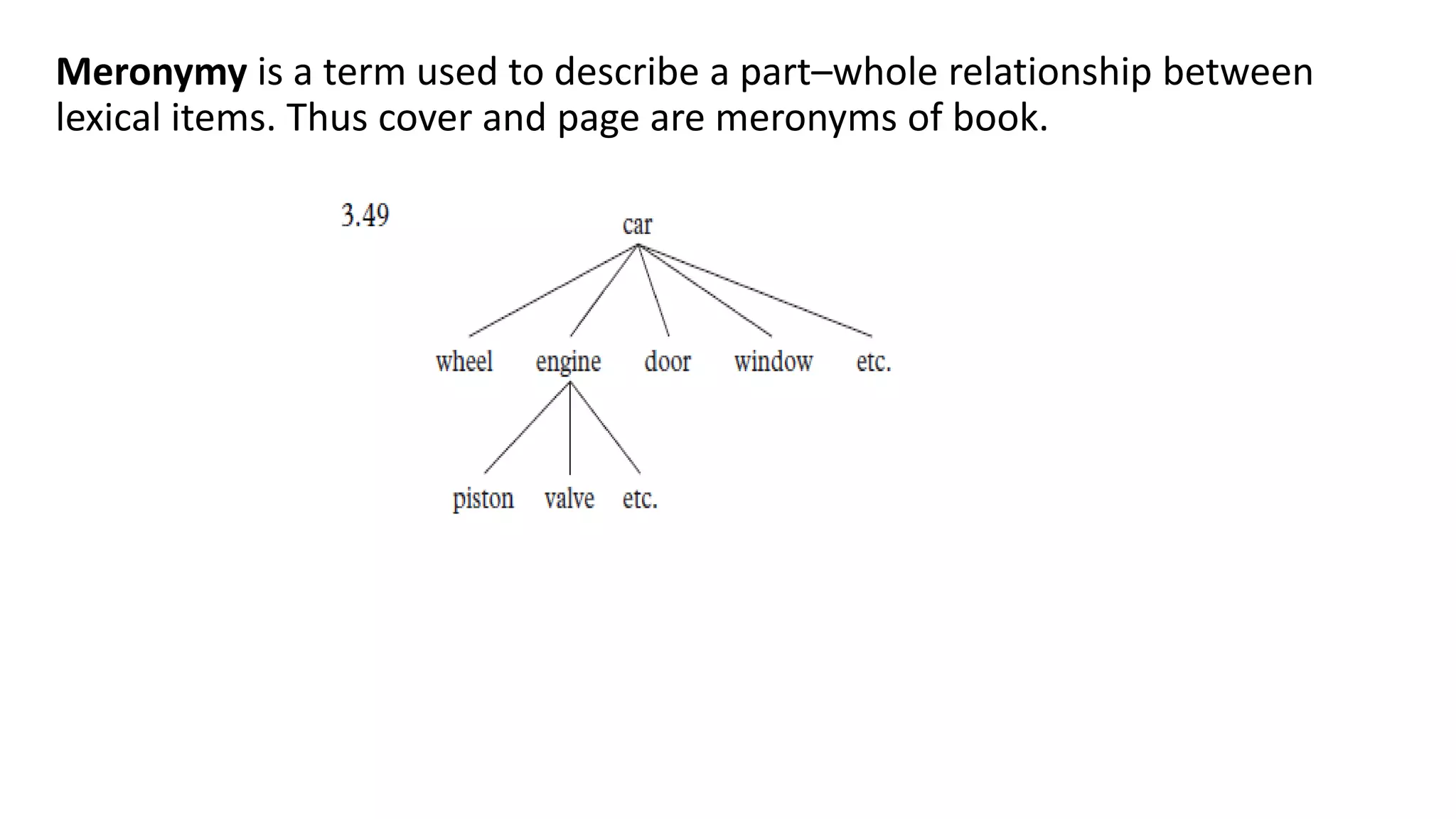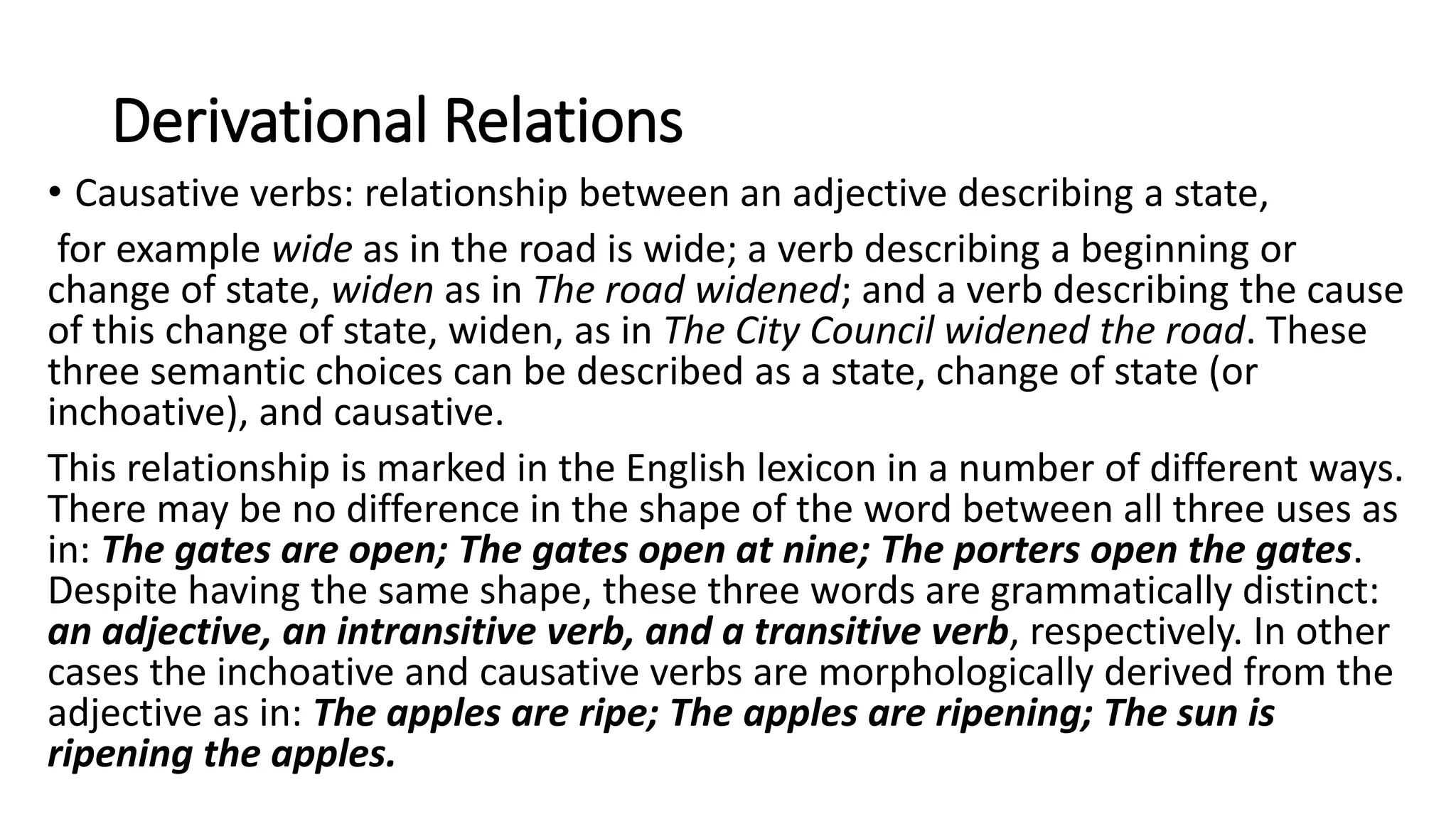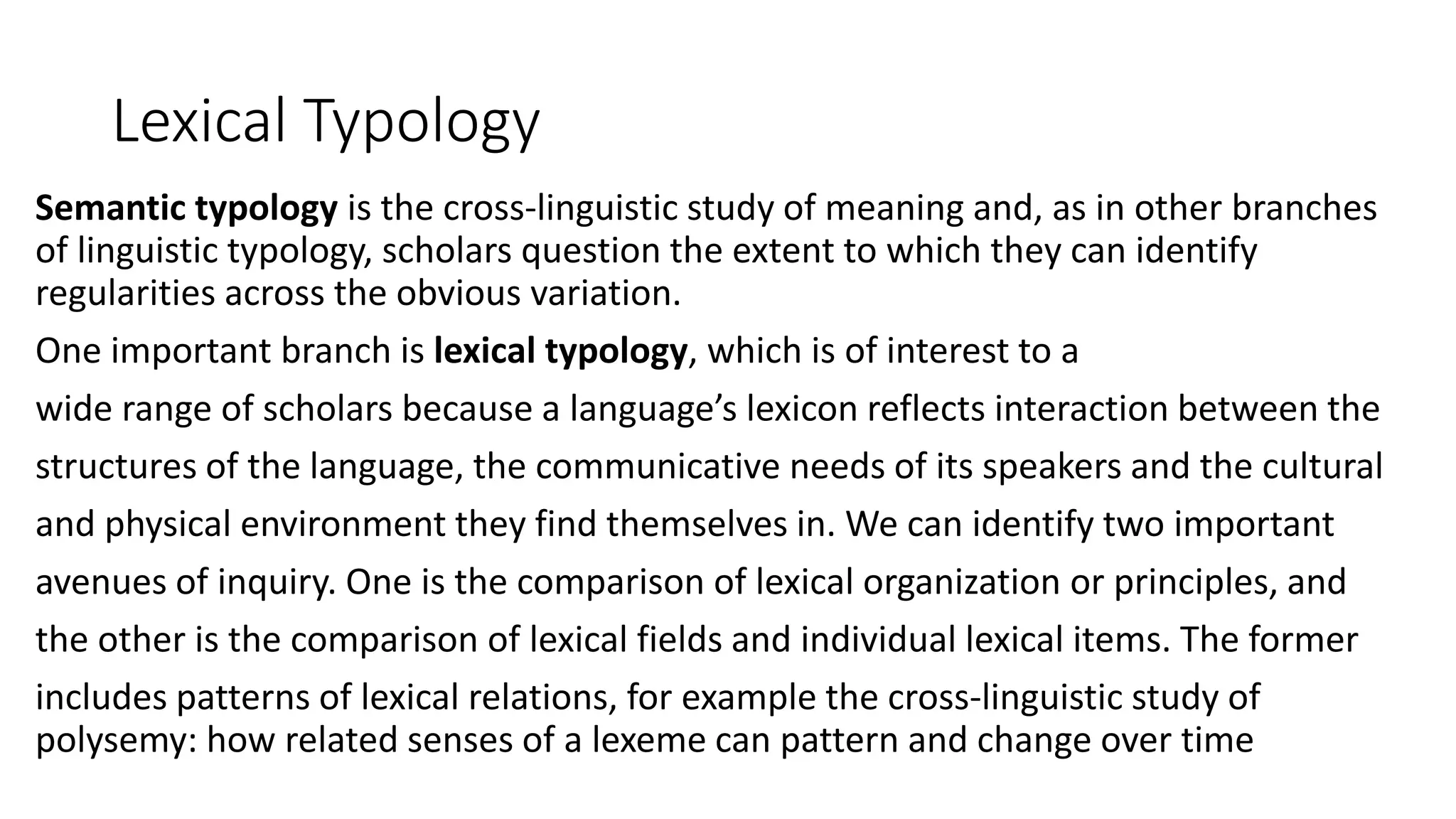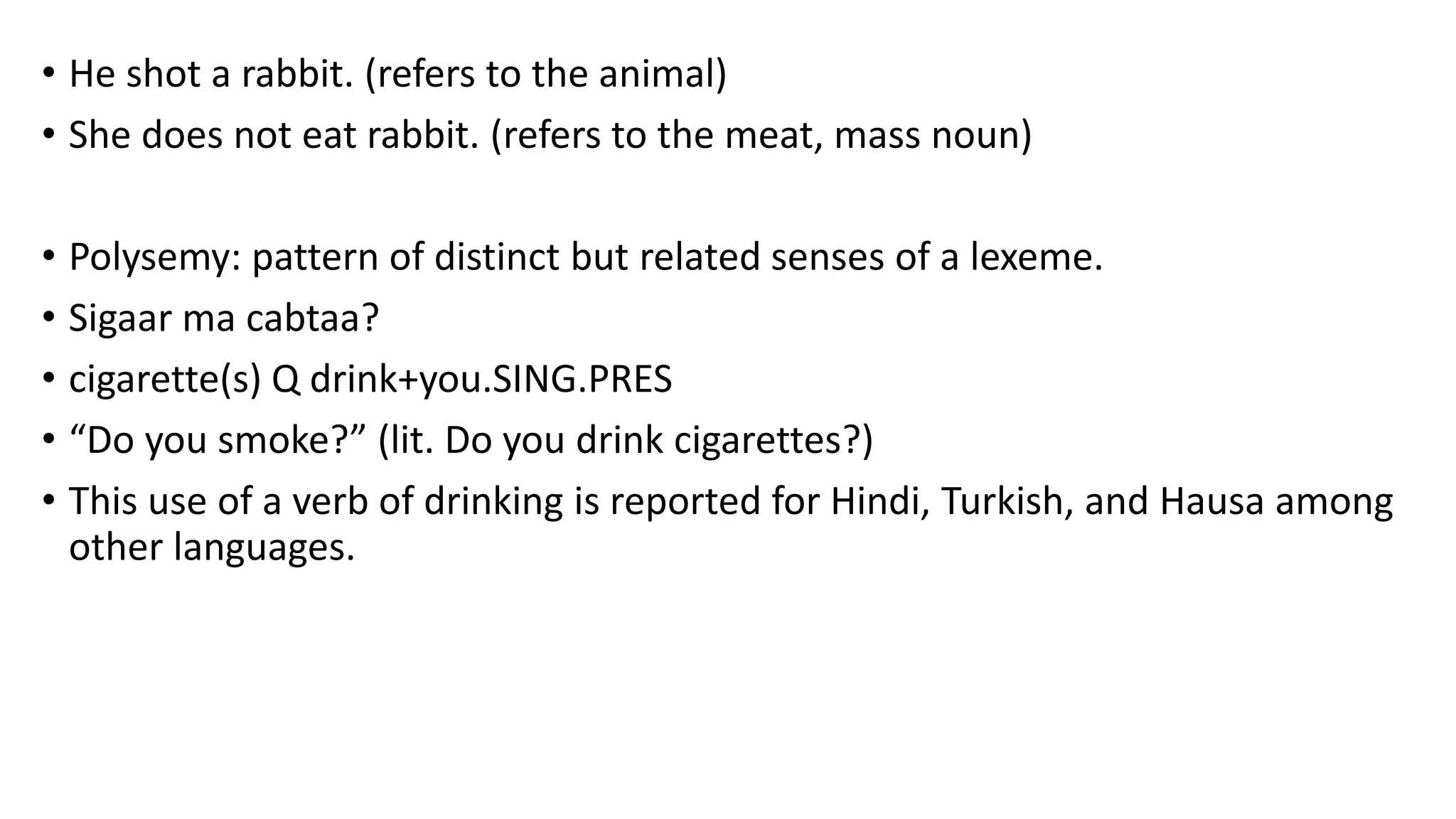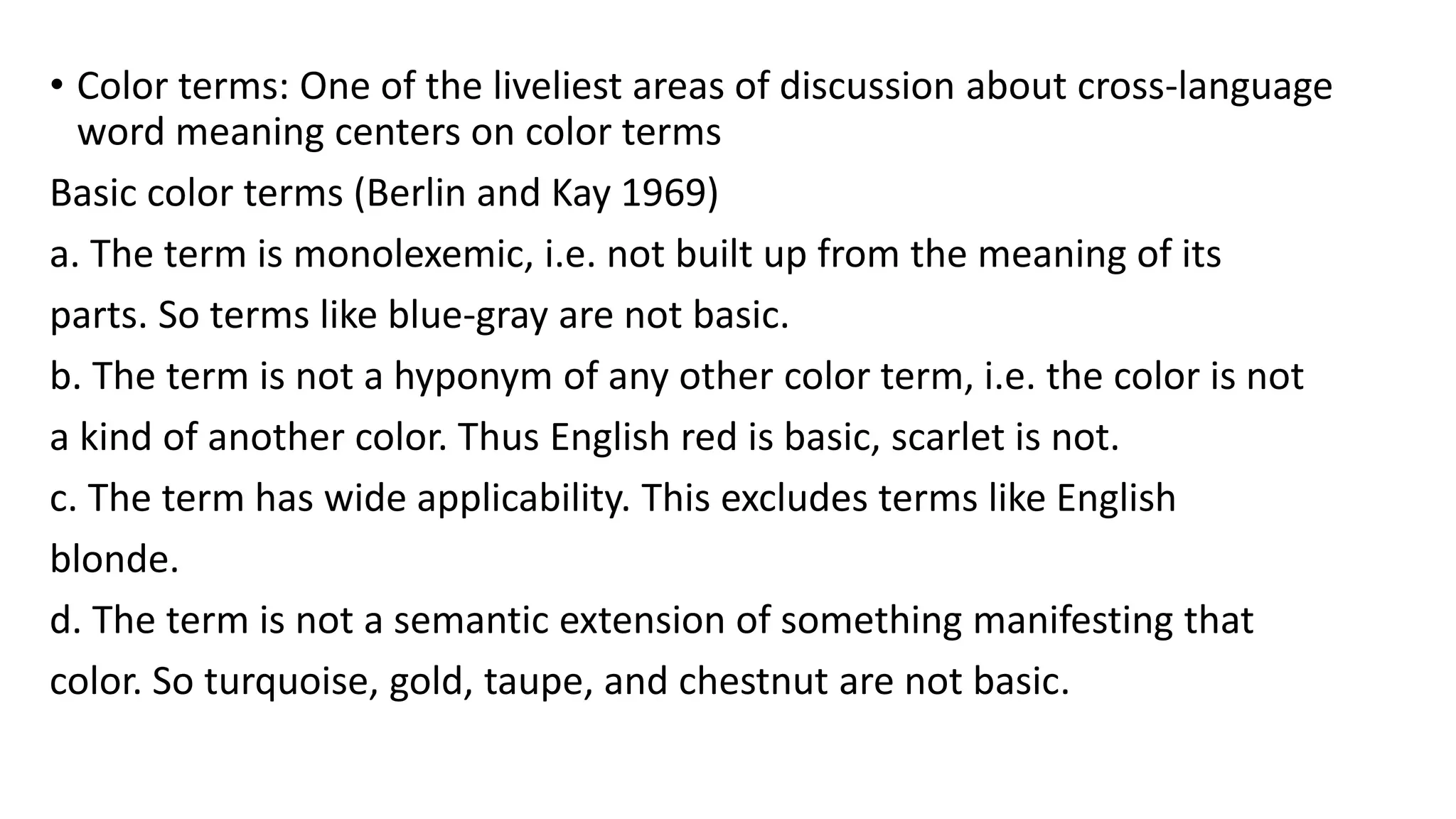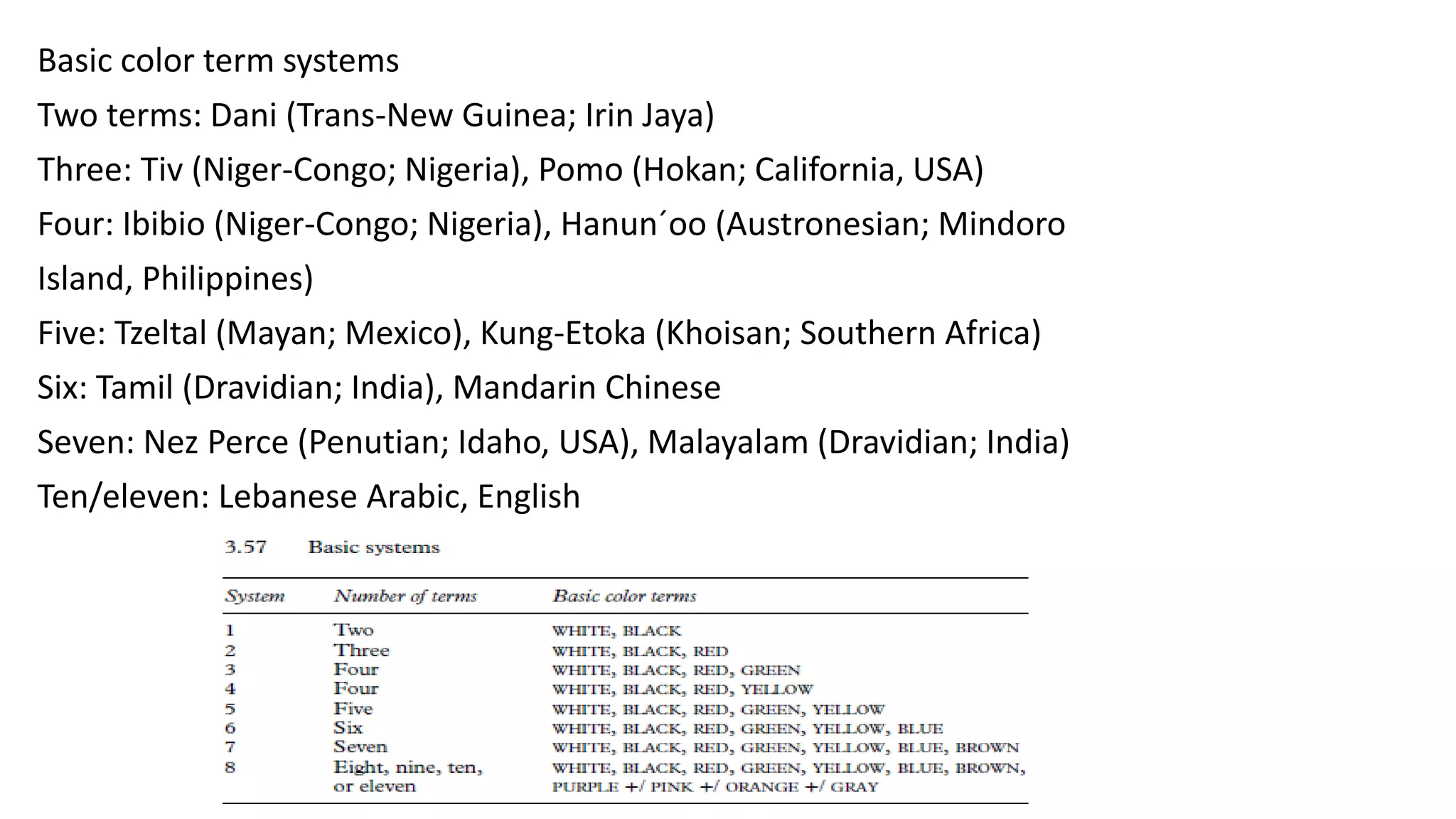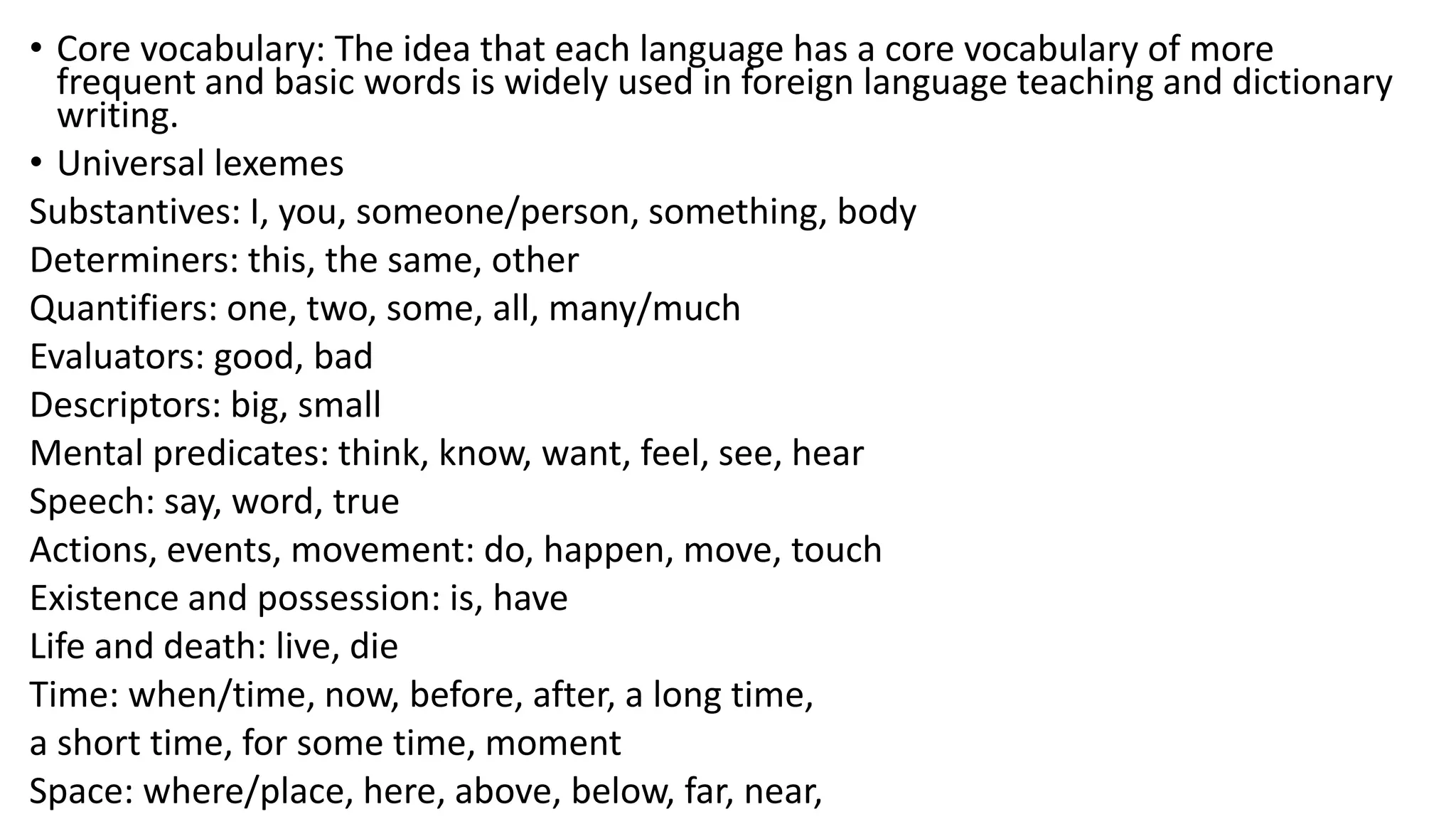The document discusses lexical semantics and how words derive their meaning. It addresses word meaning, lexical relations between words like synonyms and antonyms, and cross-linguistic patterns in word meanings. Specifically, it examines how words are defined and categorized, how their meanings are related or opposed, and commonalities in color terms and core vocabulary across languages.
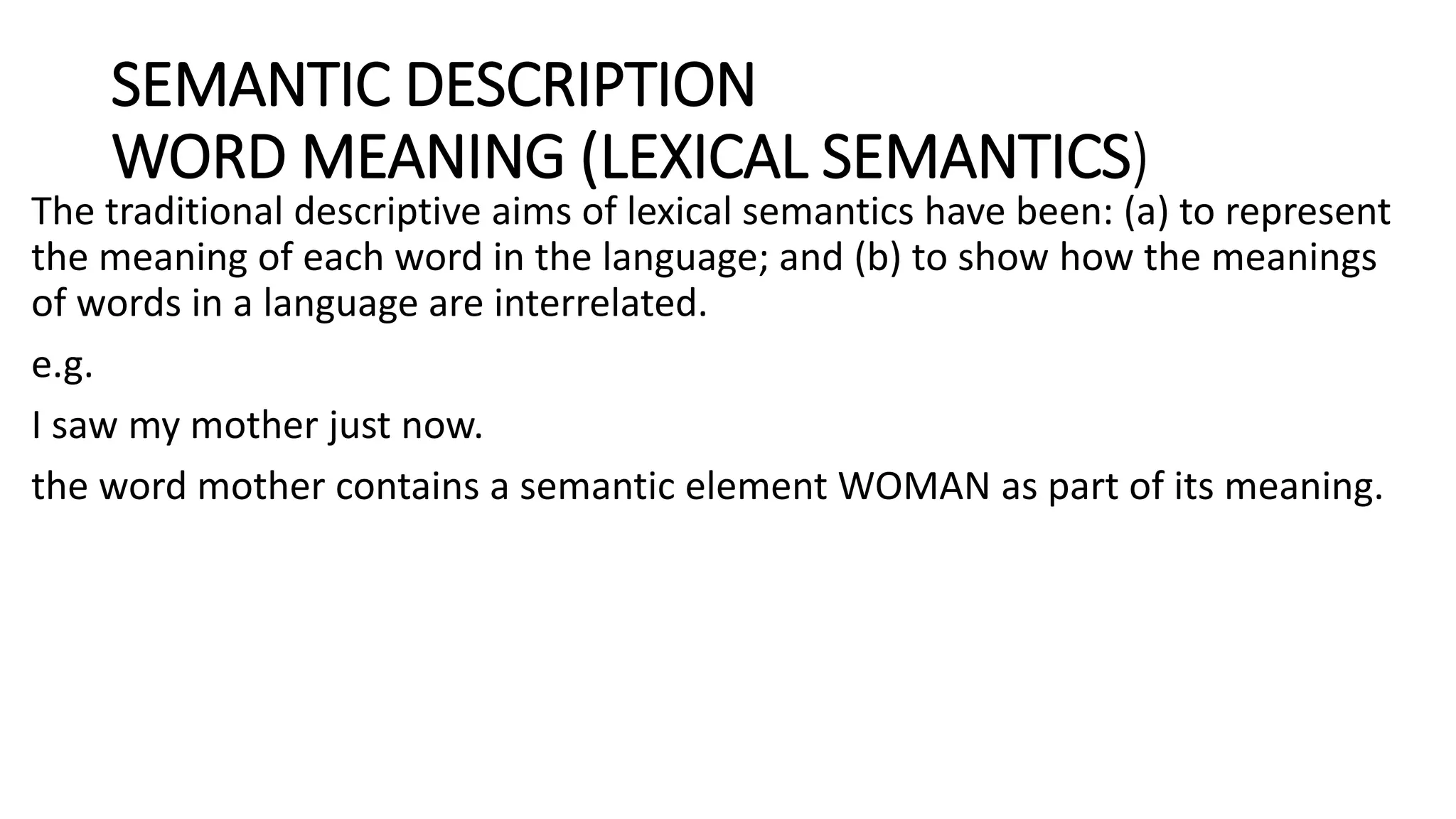
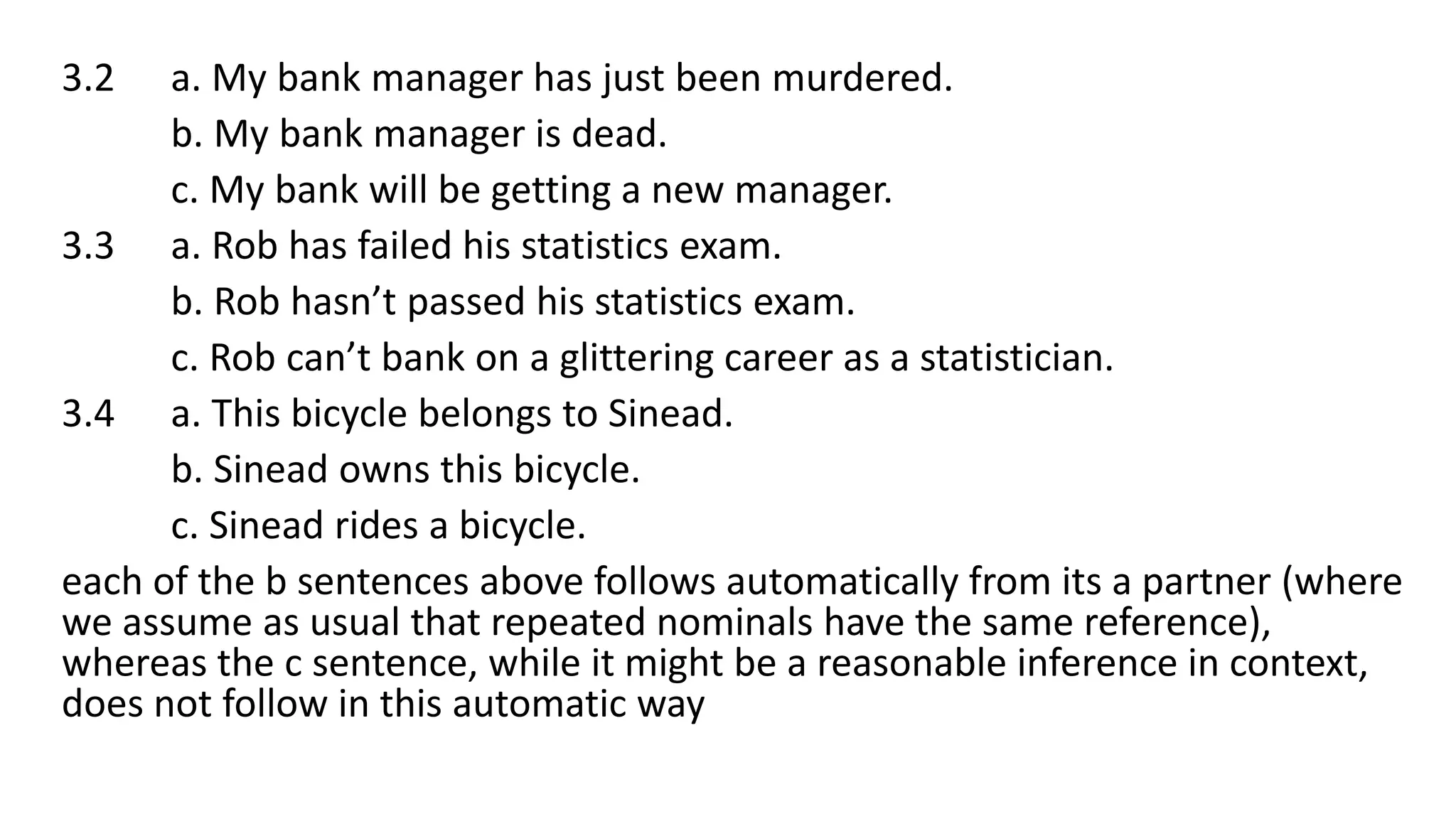
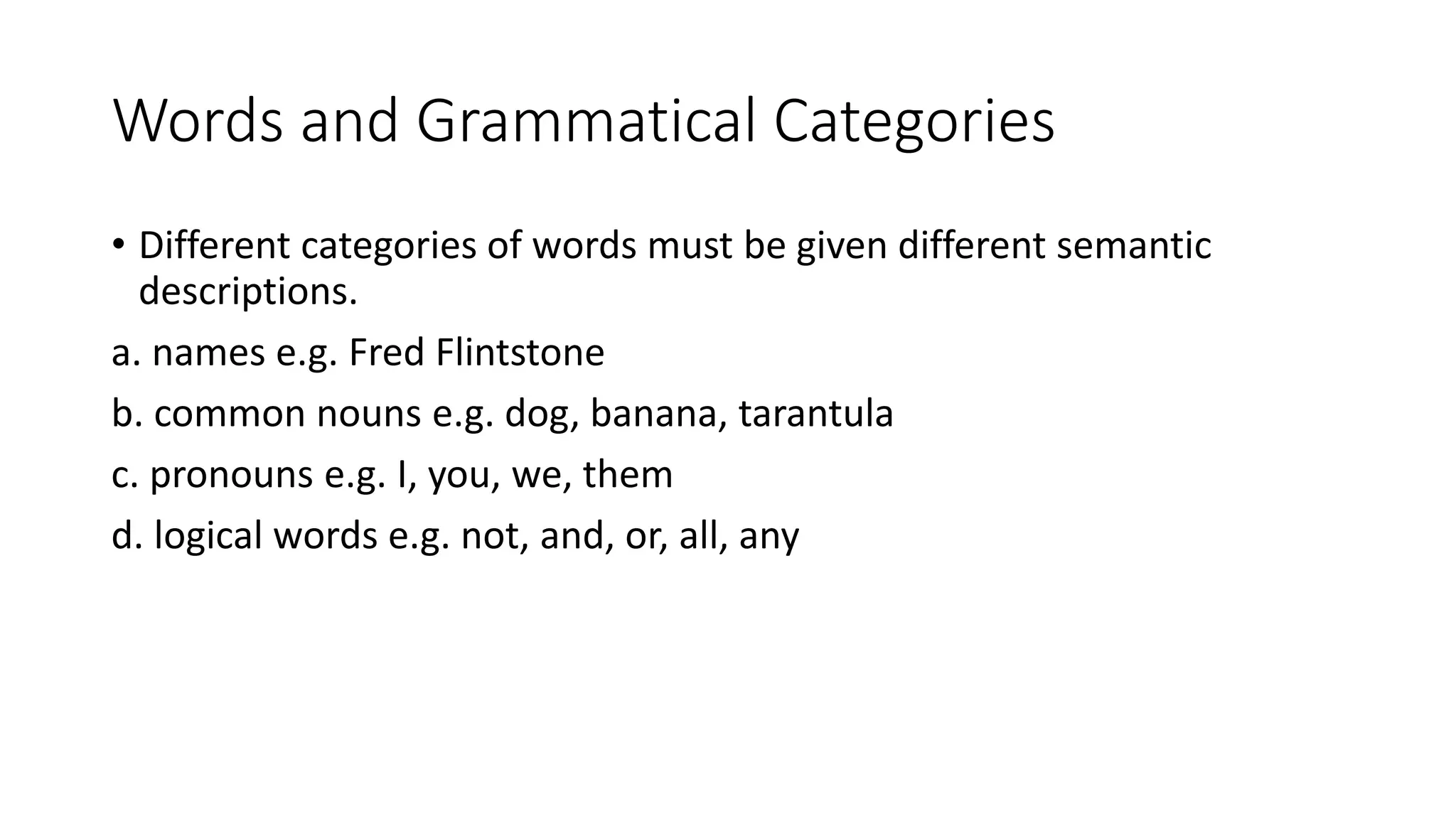
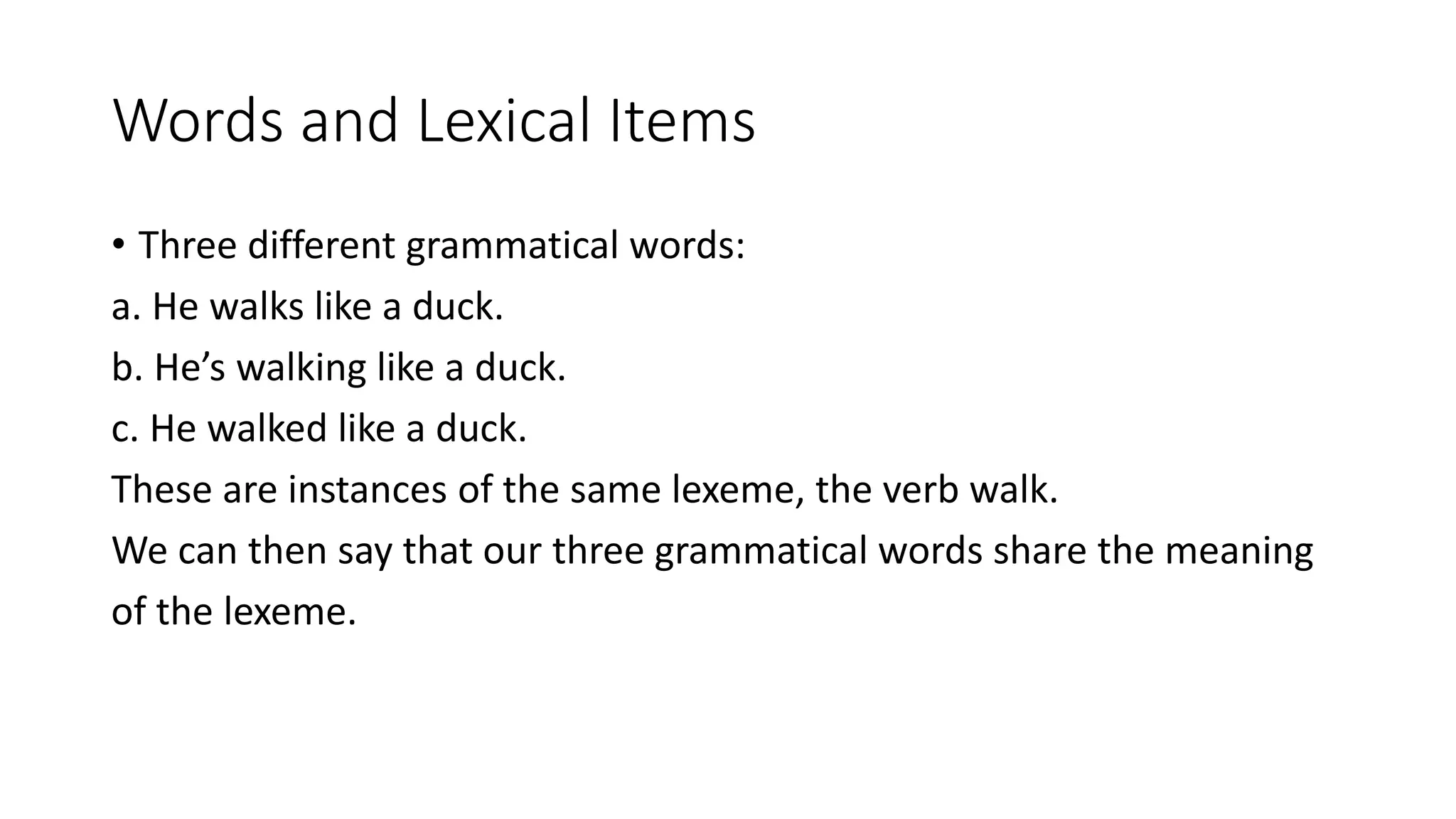
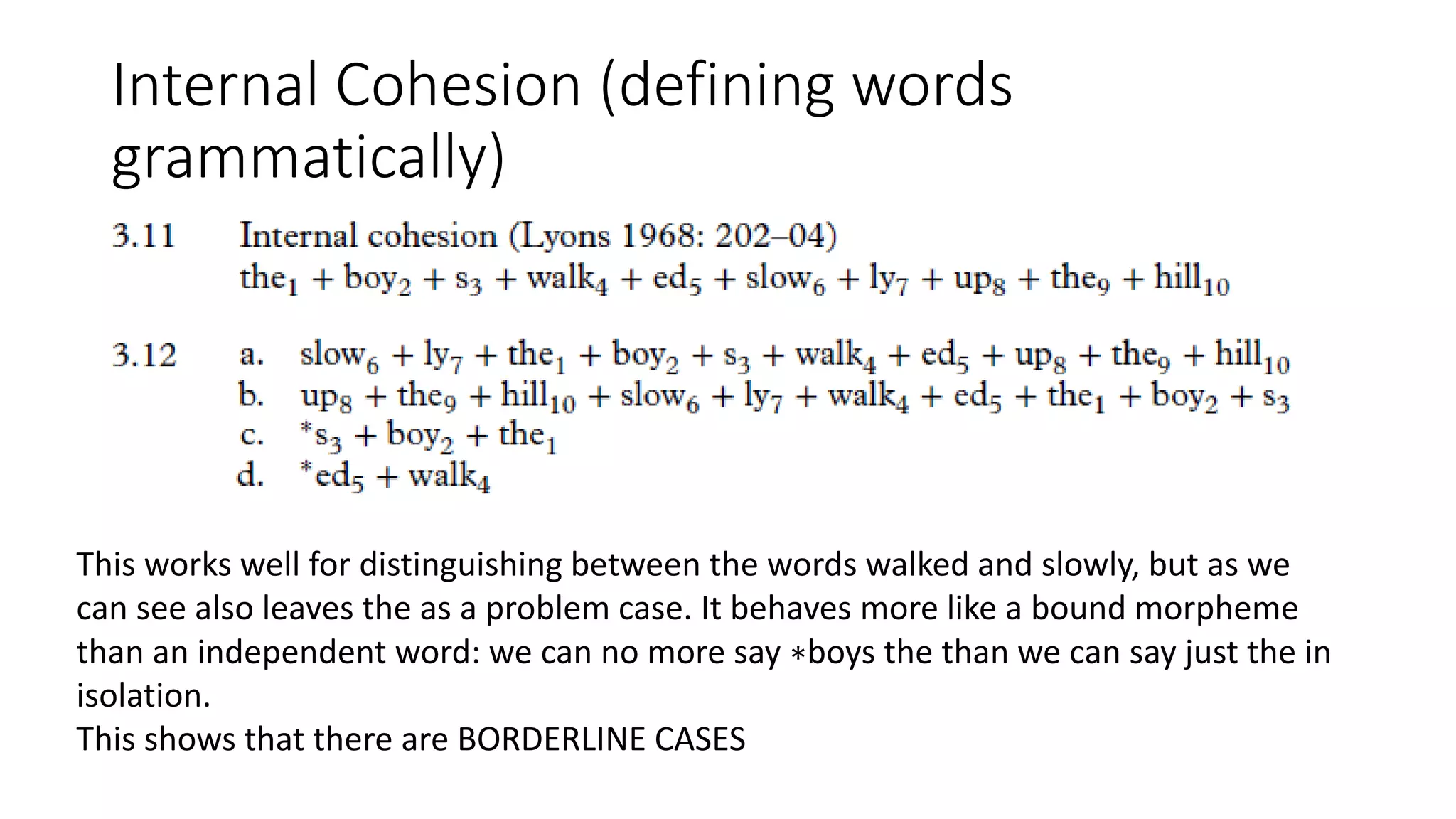
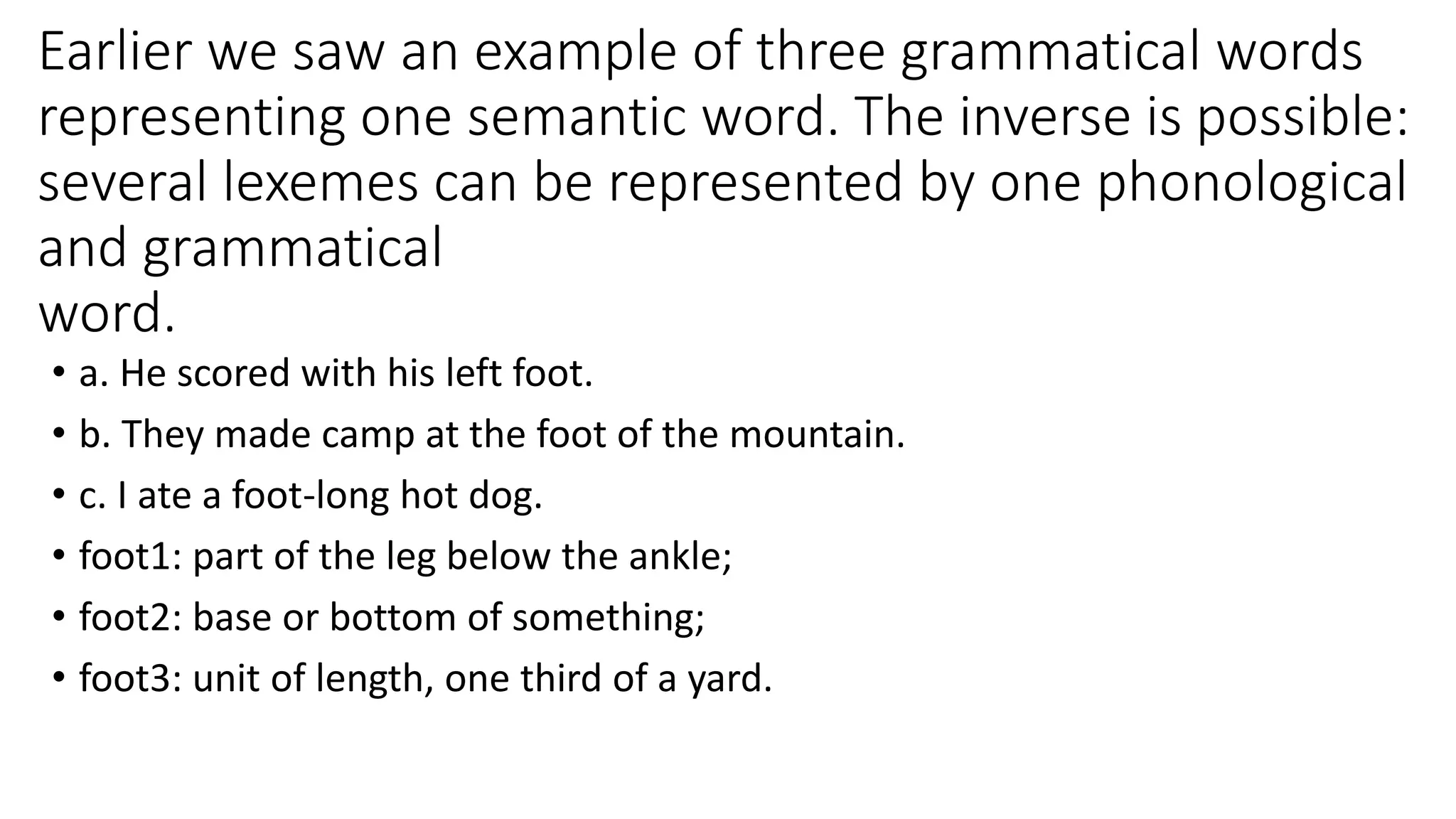
![The lexicon will be a listing of lexemes with a representation of:
1. the lexeme’s pronunciation;
2. its grammatical status;
3. its meaning;
4. its meaning relations with other lexemes
Dictionary entry for ‘foot’
foot [fUt] noun. 1. part of the leg below the ankle. 2. base or bottom of
something. 3. unit of length, one third of a yard.
This group is often called a lexical entry. Thus a lexical entry may contain
several lexemes or senses.](https://image.slidesharecdn.com/semanticslecture3-211213001604/75/Semantics-lecture-3-7-2048.jpg)

